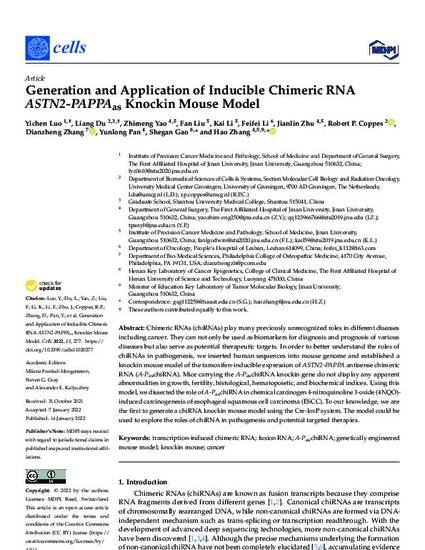
Chimeric RNAs (chiRNAs) play many previously unrecognized roles in different diseases including cancer. They can not only be used as biomarkers for diagnosis and prognosis of various diseases but also serve as potential therapeutic targets. In order to better understand the roles of chiRNAs in pathogenesis, we inserted human sequences into mouse genome and established a knockin mouse model of the tamoxifen-inducible expression of ASTN2-PAPPA antisense chimeric RNA (A-PaschiRNA). Mice carrying the A-PaschiRNA knockin gene do not display any apparent abnormalities in growth, fertility, histological, hematopoietic, and biochemical indices. Using this model, we dissected the role of A-PaschiRNA in chemical carcinogen 4-nitroquinoline 1-oxide (4NQO)-induced carcinogenesis of esophageal squamous cell carcinoma (ESCC). To our knowledge, we are the first to generate a chiRNA knockin mouse model using the Cre-loxP system. The model could be used to explore the roles of chiRNA in pathogenesis and potential targeted therapies.
Available at: http://works.bepress.com/dianzheng_zhang/112/

This article was published in Cells, Volume 11, Issue 2.
The published version is available at https://doi.org/10.3390/cells11020277.
Copyright © 2022 the authors. CC BY 4.0.